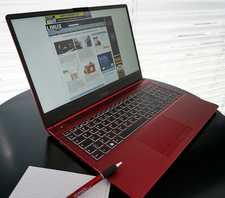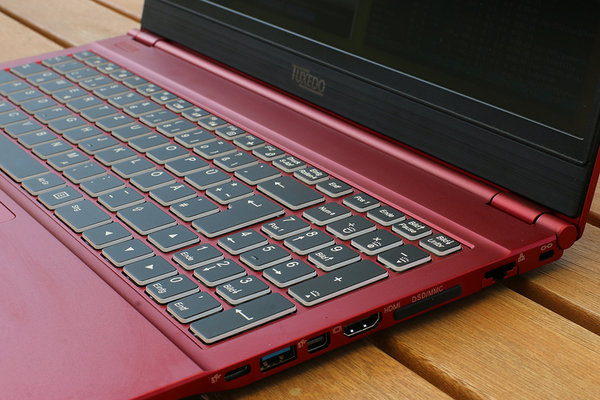Tuxedo InfinityBook Pro 15 v4
Lean Machine

A Linux-friendly alternative to Dell and Apple, the Tuxedo InfinityBook Pro 15 v4 offers a bigger screen at an affordable price, all without sacrificing portability.
Business notebooks come in different designs for different applications. Lenovo is known for its rugged but not very elegant ThinkPads, Dell for its slim and stylish XPS models, and Apple for its MacBooks. The InfinityBook series by Linux specialist Tuxedo is known for its “chic and lean” design. The latest generation of Tuxedo’s lean machine is the InfinityBook Pro 15.
To test out Tuxedo's lean machine, we put the InfinityBook Pro 15 v4 Red Edition through its paces.
 Figure 1: USB, HDMI, DisplayPort, and Ethernet: Despite its compact dimensions, the InfinityBook Pro 15 v4 has the most important interfaces on board.
Figure 1: USB, HDMI, DisplayPort, and Ethernet: Despite its compact dimensions, the InfinityBook Pro 15 v4 has the most important interfaces on board.
[...]
Buy Linux Magazine
Subscribe to our Linux Newsletters
Find Linux and Open Source Jobs
Subscribe to our ADMIN Newsletters
Support Our Work
Linux Magazine content is made possible with support from readers like you. Please consider contributing when you’ve found an article to be beneficial.

News
-
Parrot OS Switches to KDE Plasma Desktop
Yet another distro is making the move to the KDE Plasma desktop.
-
TUXEDO Announces Gemini 17
TUXEDO Computers has released the fourth generation of its Gemini laptop with plenty of updates.
-
Two New Distros Adopt Enlightenment
MX Moksha and AV Linux 25 join ranks with Bodhi Linux and embrace the Enlightenment desktop.
-
Solus Linux 4.8 Removes Python 2
Solus Linux 4.8 has been released with the latest Linux kernel, updated desktops, and a key removal.
-
Zorin OS 18 Hits over a Million Downloads
If you doubt Linux isn't gaining popularity, you only have to look at Zorin OS's download numbers.
-
TUXEDO Computers Scraps Snapdragon X1E-Based Laptop
Due to issues with a Snapdragon CPU, TUXEDO Computers has cancelled its plans to release a laptop based on this elite hardware.
-
Debian Unleashes Debian Libre Live
Debian Libre Live keeps your machine free of proprietary software.
-
Valve Announces Pending Release of Steam Machine
Shout it to the heavens: Steam Machine, powered by Linux, is set to arrive in 2026.
-
Happy Birthday, ADMIN Magazine!
ADMIN is celebrating its 15th anniversary with issue #90.
-
Another Linux Malware Discovered
Russian hackers use Hyper-V to hide malware within Linux virtual machines.

